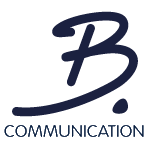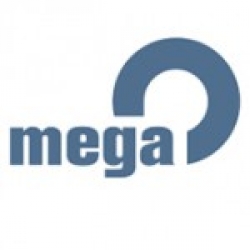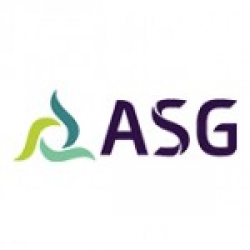Territorial authorities and urban development
on 1 July 2004
E-administration compels territorial authorities to make technical, administrative and structural advances. To guarantee that it can adapt to the changes, the Conseil Général de la Manche (CG50) has added an urban development process to its information system. This process has benefited from Mega’s mapping tools and advice.
Territorial authorities must confront many changes, each posing individual challenges from deregulation to decentralization, the creation of new European structures, seeking active economies and assessing new technologies. Without overlooking the shift in regulations encouraging a migration towards e-administration or e-government, which insists upon the ability to reduce paperwork in administrative acts.
This obligation to reorganize has an obvious impact on information systems. They should be aligned or realigned, controlled, optimized and above all ready for citizens to use as part of e-administration. This is the challenge that Pierre Avoine, Chief Information Officer of the Conseil Général de la Manche (CG50), had to face up to.
These are the mandatory steps for the Chief Information Officer :
- Better identify the corresponding scopes of the business information systems and the computer architecture
- Deduce the consequences of the division of responsibilities between project owners (department heads) and project developers (IT department)
- Encourage autonomous access in using the information system
Vertical structures applied to communication occupations
“Reducing paperwork for administrative acts requires direct exchanges between the business applications,” Pierre Avoine asserts.
Traditionally, business applications are structured vertically, hardly ever communicating amongst themselves, and leading to redundancy. These monolithic applications represent a plethora of cultures and business data repositories. Pierre Avoine surveyed more than 120 occupations within the Commission, including social welfare, road construction, scholarships and archives. In addition to this technical form of compartmentalization, there is a lack of communication between people due to technical and cultural reasons, behavior and organizational factors.
From a hierarchical structure to a networked operation
“The user’s share is growing,” reports Pierre Avoine. “Previously, machines took precedence over humans. Now, human initiative is increasingly important, which implies greater responsibility for professionals and especially project owners, meaning department heads.”
This is the source for a new contract-based relationship between the project developers and the project owners: it is no longer the IT department that decides for the project owner; the project developer’s duty is to assist the project owner.
One of Pierre Avoine’s key tasks was therefore to reorganize the users to give them greater autonomy and thereby allow them to better accomplish their assignments.
“This reorganization corresponds to a shift in the paradigm: we have changed from a hierarchical organization to a networked organization, or adhocracy,” explains the MIS who created this neologism based on the Latin expression “ad hoc”, meaning something that is appropriate to the subject or situation at hand. “This definition has the advantage of reversing the logic of referring to hierarchy, which emphasizes the reference structure to the detriment of the goal being targeted.”
“Encouraging autonomous access represents an extremely profound revolution for administration,” continues Pierre Avoine. This shift in the paradigm has tremendous technological consequences : autonomy impacts the architecture, for example, by transitioning it from client-server mode to Web mode. Furthermore, the goal for e-administration is not the same as that for administration: “It changes from equal treatment for all citizens to individualized services,” the CIO comments.
Mapping the information system in order to grasp the inherent complexity
To explain and convey the ideas of communications between applications, the new organization and the distinction between project owner and project developer, the CIO used the Mega model to break this down into four layers, thus demonstrating the impact that business structures have on the information system.
“Mapping is a very effective way of showing department managers the source of a problem: for example, computer systems may come to a standstill when temperatures get too high. This does not fall under the responsibility of the IT department, but the person responsible for the building’s infrastructure. This knowledge allows departments to control the system more effectively, which is a bonus,” emphasizes Pierre Avoine.
To interconnect the various applications and especially promote communication between the different occupations in the Commission, the CIO implemented a single data repository using Mega tools.
“The creation of a common data repository is the very basis of administrative structures. This repository will serve as an exchange point between the 1500 users of the information system,” he adds. “Mega is an essential component for better understanding the system because of the functional perspective it offers.”
Strengthened by this knowledge, IS users can give meaning to their actions and measure their value in the overall set of challenges. Everyone shares this ultimate goal, drawn from three basic principles: common rules, autonomy and standardized exchanges.
Mega gets the ball rolling
One of the results of the work that the Commission undertook with Mega is a map available through the Intranet.
Between the different occupations and the information architecture, there are two aspects to the mapping process:
- Understand its existing setup; identify the primary functions, occupations and failures, as well as the main data redundancies
- Establish a functional and business goal: the key features and the main computing needs
Mapping consists of describing the information system according to four views or levels:
- Business view (who? what? where?)
- Organizational view (how?)
- Application view (with what?)
- Technical view (using what environment?)
The business and organizational views, which include the processes and all the practices, are derived by interviewing the users.
Concurrently, a description of the data used and a detailed description of the application are drafted. Then, a benchmark architecture is created based on these factors.
This summarizes the technological, organization, financial and cultural dimensions on the one hand, and the business structures on the other.
It is the duty of the technical architecture to improve performance, facilitate governance and knowledge management, and generate new operational modes through the use of Tools.


